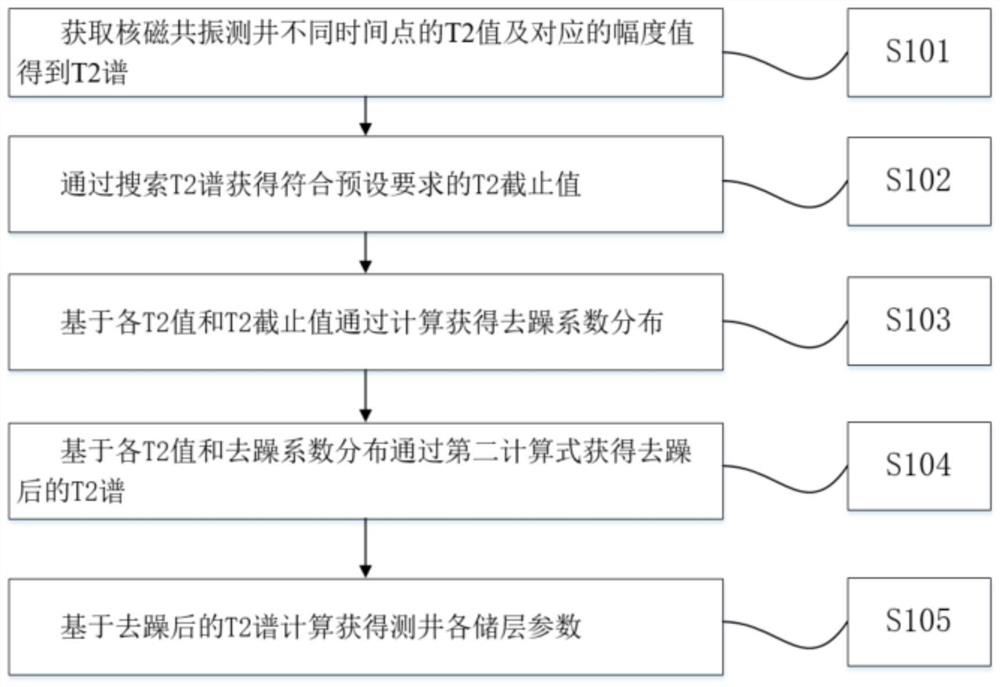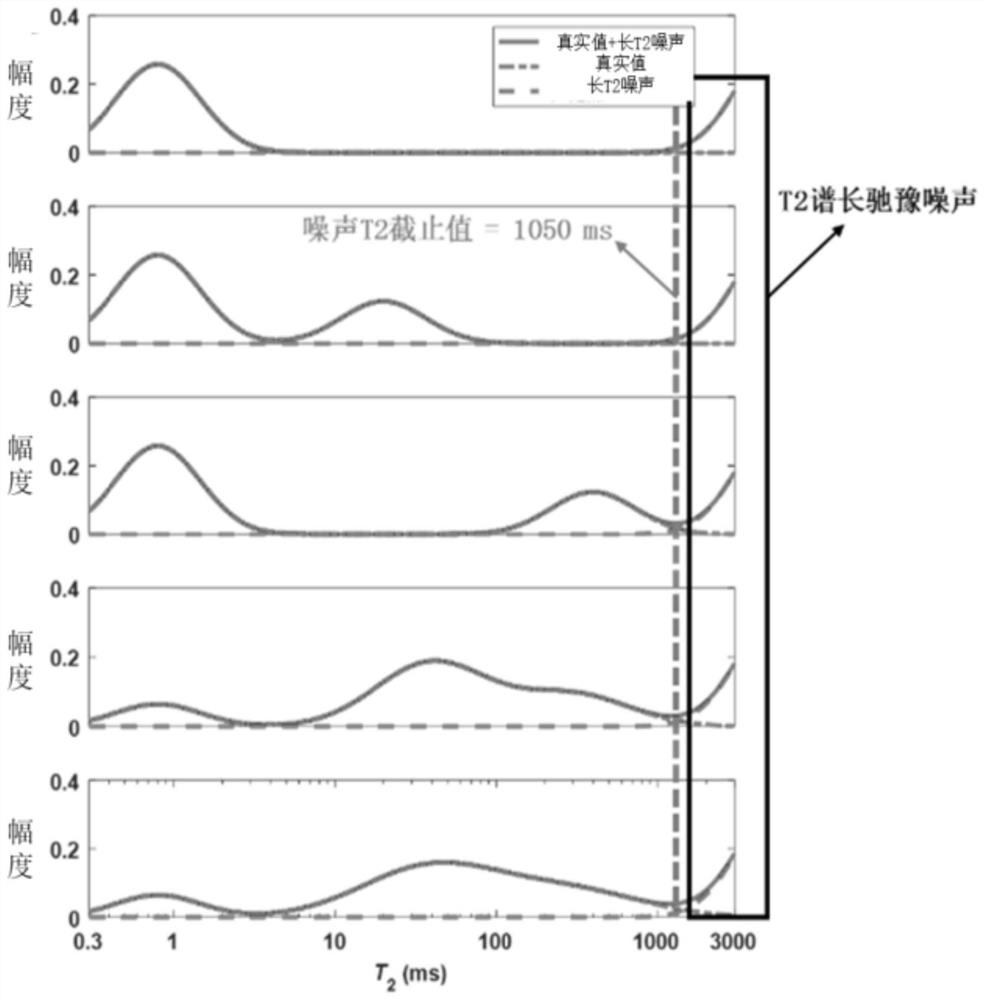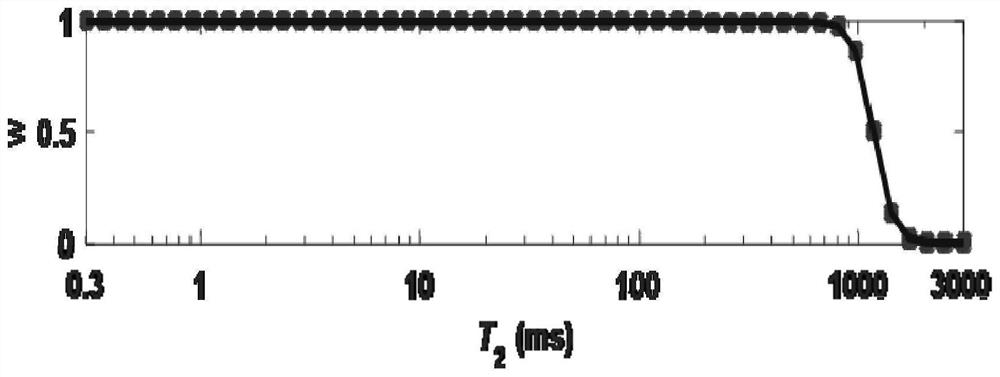Method and system for optimizing nuclear magnetic resonance logging parameters, storage medium and electronic equipment
A nuclear magnetic resonance and well logging technology, which is applied in the use of nuclear magnetic resonance spectrum for measurement, magnetic resonance measurement, and electronic magnetic resonance/NMR detection, etc. Effects of optimizing reservoir parameters
- Summary
- Abstract
- Description
- Claims
- Application Information
AI Technical Summary
Problems solved by technology
Method used
Image
Examples
no. 1 example
[0056] figure 1 It is a schematic flowchart of the method for optimizing NMR logging reservoir parameters in this embodiment.
[0057] In statistical mechanics and thermodynamics, relaxation time represents the time required for a system to go from an unstable steady state to a stable steady state. In synergetics, relaxation time can characterize the degree of influence of fast variables, and a short relaxation time indicates that fast variables are easy to eliminate. After a system in equilibrium is momentarily disturbed by the outside world, it must be able to return to the original equilibrium state after a certain period of time. This period of time experienced by the system is the relaxation time.
[0058]There are two types of relaxation time, namely T1 and T2. T1 is the spin-lattice or longitudinal relaxation time, and T2 is the spin-spin or transverse relaxation time.
[0059] T1 is spin lattice or longitudinal relaxation time, and the time constant T1 of longitudina...
no. 2 example
[0095] Fig. 5 is an effect diagram of the application of the denoised T2 spectrum in calculating the reservoir parameters of Well A in this embodiment.
[0096] In statistical mechanics and thermodynamics, relaxation time represents the time required for a system to go from an unstable steady state to a stable steady state. In synergetics, relaxation time can characterize the degree of influence of fast variables, and a short relaxation time indicates that fast variables are easy to eliminate. After a system in equilibrium is momentarily disturbed by the outside world, it must be able to return to the original equilibrium state after a certain period of time. This period of time experienced by the system is the relaxation time.
[0097] There are two types of relaxation time, namely T1 and T2. T1 is the spin-lattice or longitudinal relaxation time, and T2 is the spin-spin or transverse relaxation time.
[0098] T1 is spin lattice or longitudinal relaxation time, and the time ...
no. 3 example
[0128] Figure 6 It is a schematic flow chart of the method for obtaining denoised T2 in this embodiment
[0129] The present invention determines the T2 cut-off value of the T2 spectrum long relaxation noise by analyzing the NMR logging T2 spectrum form, calculates the denoising coefficient of the T2 spectrum, and then corrects the T2 spectrum to eliminate the influence of the long relaxation noise, providing well logging interpreters A more accurate T2 spectrum is used for logging reservoir interpretation and evaluation.
[0130] In this embodiment, a method for eliminating the relaxation noise of T2 spectral length in nuclear magnetic resonance logging includes:
[0131] First, analyze the NMR logging T2 spectrum shape to determine its noise T2 cut-off value,
[0132] The T2 spectral denoising coefficient distribution is then calculated according to its T2 cutoff value,
[0133] Finally, according to the T2 spectrum denoising coefficient distribution, the T2 spectrum is ...
PUM
 Login to View More
Login to View More Abstract
Description
Claims
Application Information
 Login to View More
Login to View More - R&D
- Intellectual Property
- Life Sciences
- Materials
- Tech Scout
- Unparalleled Data Quality
- Higher Quality Content
- 60% Fewer Hallucinations
Browse by: Latest US Patents, China's latest patents, Technical Efficacy Thesaurus, Application Domain, Technology Topic, Popular Technical Reports.
© 2025 PatSnap. All rights reserved.Legal|Privacy policy|Modern Slavery Act Transparency Statement|Sitemap|About US| Contact US: help@patsnap.com



